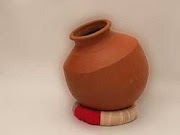Shehnai | Indian Classical music instrument
There are many theories about the development of Shehnai. One theory says that it is an improvised instrument of Pungi; an instrument used primarily by snake charmer. Another theory about the origin of the name Shehnai is that it was played at the court of "Shah"( Royal) by "Nai" (Barber).
The sound of the shehnai is considered auspicious. And for this reason it is still played in temples festivities and North Indian wedding ceremony. This instrument of Royal court or temple festivities was first introduced to the classical concert stage by Bismillah Khan; one of the best performers of this instrument.
Construction of Shehnai
Shehnai, a north Indian wind instrument is like the nadaswaram of south Indian classical music.
The structure of the shehnai is simple. It has a wooden tubular body about one and a half to two feet long and cylindrical in shape. which broadens towards the lower end. A separate metallic or wooden contraption called the reed, is added to one end of the cylinder. The other end of the cylinder has a metallic bell-like structure, which gives out the sound. The body of Shehnai has a central conical bore with seven holes which are actually finger holes. The instrument is usually referred to as a double-reeded instrument, but in most cases it is actually a quadruple-reed instrument because they have two upper reeds and two lower reeds. The shehnai has a range of two octaves, from the A below middle C to the A one line above the treble clef.
How Shehnai is played
Shehnai is played by holding it vertically. Players blows into the reed and different tones are produced by closing or releasing the holes partially or fully with the fingers. Adjustment of the blowing pressure in the pipe also plays a vital role for creating different tones.
Famous shehnai exponents
Ustad Bismillah Khan, Ali Ahmed Hussain Khan, Anant Lal, Balakrishna Salonke, Baburao Yadav and Lokesh Anand.




0 Comments